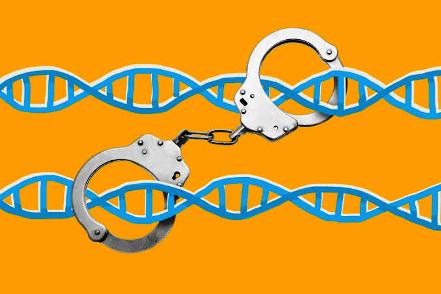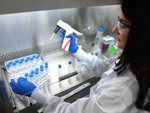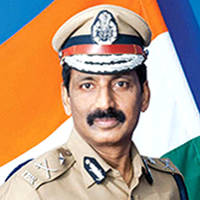GENETIC GENEALOGY: A REVOLUTIONARY INVESTIGATION TOOL

On March 18, 1977, the telephone rang at 5 pm as on earlier occasions at the Sacramento County Sheriff’s Office from the same caller saying: “I’m the East Side Rapist and I have my next victim already stalked and you guys can’t catch me.” True to his word, the East Area Rapist raped his next victim the same night.
 That night the caller woke the victims at their home, surprising them with a blinding flashlight. He was wearing a ski mask and gloves to conceal his identity. He asked the woman to tie up her husband after she had corded him up, he re-strapped him and gagged him and ran his knife’s blade down the length of the man’s spine. Then he walked into the kitchen and brought a stack of dishes and placed them on the lying mans back. Then he yelled at the man. “If I hear these dishes move, I’ll kill everything in the house.” He disappeared for a few minutes again, only to return wearing only a shirt, no pants and his gravity defying manhood. The attacker led the woman to the bedroom, laid her on the bed, and ripped apart her nightdress with his knife. He then repeatedly raped her for several hours.
That night the caller woke the victims at their home, surprising them with a blinding flashlight. He was wearing a ski mask and gloves to conceal his identity. He asked the woman to tie up her husband after she had corded him up, he re-strapped him and gagged him and ran his knife’s blade down the length of the man’s spine. Then he walked into the kitchen and brought a stack of dishes and placed them on the lying mans back. Then he yelled at the man. “If I hear these dishes move, I’ll kill everything in the house.” He disappeared for a few minutes again, only to return wearing only a shirt, no pants and his gravity defying manhood. The attacker led the woman to the bedroom, laid her on the bed, and ripped apart her nightdress with his knife. He then repeatedly raped her for several hours.
This was not the first time the attacker was perpetuating such an attack, the same mysterious and rampageous predator had perpetrated fifty sexual assaults in Northern California before moving south, where he committed thirteen sadistic murders between 1975 and 1986. He then vanished, eluding capture by multiple police forces and some of the best detectives in the area.
 Three decades later, Michelle McNamara, a true crime journalist and posthumous author of the “I’ll Be Gone in the Dark” who died while the book was being written and had determined herself to find the violent psychopath decided in 2013 to name the attacker “the Golden State Killer”. Her book recounts a criminal mastermind and the havoc he left behind. When all hope of finding the killer seemed to have evaporated, and no clue was forthcoming, the Federal Bureau of Investigation (FBI) held a news conference on June 15, 2016, and announced a $50,000 reward for his capture
Three decades later, Michelle McNamara, a true crime journalist and posthumous author of the “I’ll Be Gone in the Dark” who died while the book was being written and had determined herself to find the violent psychopath decided in 2013 to name the attacker “the Golden State Killer”. Her book recounts a criminal mastermind and the havoc he left behind. When all hope of finding the killer seemed to have evaporated, and no clue was forthcoming, the Federal Bureau of Investigation (FBI) held a news conference on June 15, 2016, and announced a $50,000 reward for his capture
Fast forward to April 27, 2018, the Courtroom 61 at Sacramento County Jail, is awaiting the entrance of one of the most elusive rapist/serial killers in history. The police had arrested the alleged Golden State Killer three days back. The breakthrough for the case had come from genetic genealogy information on a consumer genealogy website. The development of public databases such as GEDMatch for DNA data in 2010 and the proliferation in the number of genetic genealogy websites had enabled genetic genealogy to assist criminal investigations, including the breakthrough in the Golden State Killer case. In the end, the man whom the police charged for the rape and murder surprisingly was a 72-year-old former police officer named Joseph James DeAngelo.
In the run-up to the investigation of DeAngelo’s case, the investigators had uploaded the crime scene DNA into an online database of GEDMatch, which linked the perpetrators DNA to several distant relatives. Making` use of the information, the researchers built a family tree that led them to DeAngelo. As a next step, they clandestinely got DeAngelo’s DNA through an item thrown away by him and checked it with the crime scene DNA to get an alleged match to the criminal and arrested him. In the months following this case, widespread use of genetic genealogy had led to over 20 arrests in cold cases.
 Forensic genealogy is an emerging technique that combines a family tree building with DNA fingerprinting. It uses genetic genealogy which helps people identify their ancestors or track down their adoptive parents, missing siblings, missing heirs and remains of unidentified soldiers along with DNA analysis for investigative purposes.
Forensic genealogy is an emerging technique that combines a family tree building with DNA fingerprinting. It uses genetic genealogy which helps people identify their ancestors or track down their adoptive parents, missing siblings, missing heirs and remains of unidentified soldiers along with DNA analysis for investigative purposes.
The police need five things to succeed in the forensic genealogy technique. They need to have a crime scene sample of sufficient quality and quantity. This enables them to compare with a genetic genealogy database. Second, they need many genetic genealogy tests to have a good chance of zeroing on the suspect. Third, they need a high density of DNA markers, such as eye colour and biogeographical ancestry. Fourth a community resource to share information such as GEDMatch. Fifth, a dedicated team of researchers to create family trees. For genetic genealogy to work well in tracking down suspects, searches should find matches for second or third cousins or closer relatives. The closer the uploaded DNA is related to the suspect, the easier it is to construct a family tree.
There are several genetic genealogy websites such as FamilyTreeDNA, Ancestry, MyHeritage, GED, etc. Some websites such as GED allow law enforcement to have access to the user’s data while there are some like Ancestry.com which won’t share their data with the police unless subpoenaed to do so. GED, which allows access of its data to police, has only one million users, while Ancestry has 20 million users who have uploaded their DNA into its database. This in a way is stifling the breadth and depth of police DNA searches.
Police using genetic genealogy have solved several cases, some of which are over 20 years old, which otherwise would have eluded detection. On April 1, 1988, police found April Tinsley an 8-year-old girl’s body in a ditch. Police found her shoes and a bag containing a dildo near her body. Forensic DNA testing was not conventional at the time of April’s murder. In 2015, Fort Wayne police learned of a device called Snapshot being offered by Parabon NanoLabs which could generate a sketch of the suspect from minuscule amounts of DNA. Snapshot used a technique called DNA phenotyping to determine several physical traits such as the eye-colour, hair colour, nose shape and produced computer-generated sketches of the suspect. The sketches, however miserably failed to help the police in identifying the suspect. Parabon uploaded the DNA which they had put to use for generating a sketch to GEDMatch for comparison with potential relatives of the suspect. Within months, they narrowed down the search to two brothers and were confident that John Miller, a Walmart employee, was their killer. They got his DNA from used condoms left by him in the trash and arrested him when they found that his semen DNA matched to April Tinsley’s killer.
Similarly, police could implicate a truck driver by his family tree and his DNA for a double murder committed by him over 30 years ago using this revolutionary technique. The police arrested the trucker for killing two young Canadians, Jay Cooke, 20, and his girlfriend Tanya Van Cuylenborg, 18, in 1987. The trucker killed Cook by suffocating him to death, with a pack of cigarettes stuffed into his throat, while Van Cuylenborg had died of a gunshot wound to the head.
The danger of forensic genealogy is that police could start deploying this technique for petty crimes such as shoplifting, trespassing, traffic violations etc. Civil liberty enthusiasts are therefore petrifying over the use of this technique. The public and the countries need to decide how far we can use this technique. In Denver, USA, the police used this technique to detect a crime where a suspect stole $2 after breaking into a car. The drop of blood left by the suspect led to his identification because his brother had uploaded his DNA into a database. Second, when a person consents to genetic sleuthing, he is also exposing all his relatives, family members and future generations to criminal liability. Third, the owners of the website set the default options for the users and leave a choice for the users. If a user does not exercise his choice, the information become available to third parties. Some users also upload their DNA into websites and forget about it. For instance, police found an 18-year-old Michelle Martinko stabbed to death in her car in the parking lot of a mall. Using the crime scene DNA, the researchers created a profile of the presumed attacker. When they compared the profile with the genealogy site for a match, the results revealed a distant relative of Brandy Jennings as the suspect which led to his arrest. Brandy Jennings had made her profile on GEDMatch and had totally forgotten about it.
Just like the genetic genealogy we humans have a spiritual genealogy too. Just as our DNA can unravel our family tree, our DNA also has a record of our spiritual heritage. Although science has not delved into this aspect, I know for sure we have it. I believe we can activate those genes in our DNA when we establish direct communion with our souls, the earth and the sky, animals and herbs and with water and weather like our prehistoric ancestors did. My job these days forces me to spend large chunks of my time at the Athi-Varadaraja temple, where day in and day out I witness lakhs of devotees light up with spiritual ecstasy as the long queues that slither through the Sanctum-Sanctorum allows the devotees to catch a brief glimpse of the Lord. But no sooner they have walked out of the temple their shoulders drop, and their life seems hopeless again. The unalloyed spiritual joy which a devotee experiences need not be momentary, spiritual ecstasy is meant to be perpetual. Our ancients knew how, to let reverence and a sense of sacred speak to them in hallowed whispers throughout mundane tasks of daily life. Today, our genes in our DNA or maybe our souls are aching and yearning for the same old wisdom that seems so inaccessible to us in our denatured ultra-speed modern life. We are today confusing our spiritual DNA by trying to fill its yearning by connecting ourselves and embracing all things external including fake gurus who abound in plenty. We have today forgotten that we are descendants of powerful visionaries and earth-wise geniuses, and their ancient knowing still resonates deep in our genes. The magic of perpetual spiritual ecstasy is available to us even today, if we uncover our spiritual ancestry, like our ancient masters did by going within and connecting with our deep inner selves instead of searching for spiritual solace outside our beings.
Source from: epaper/deccanchronicle/chennai/dt:05.08.2019
 Dr.K. Jayanth Murali is an IPS Officer belonging to 1991 batch. He is borne on Tamil Nadu cadre. He lives with his family in Chennai, India. He is currently serving the Government of Tamil Nadu as Additional Director General of Police, Law and Order.
Dr.K. Jayanth Murali is an IPS Officer belonging to 1991 batch. He is borne on Tamil Nadu cadre. He lives with his family in Chennai, India. He is currently serving the Government of Tamil Nadu as Additional Director General of Police, Law and Order.


